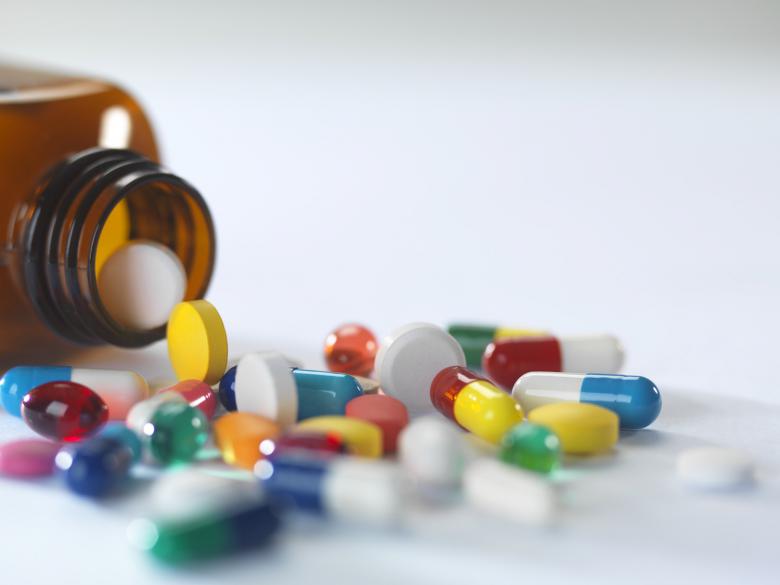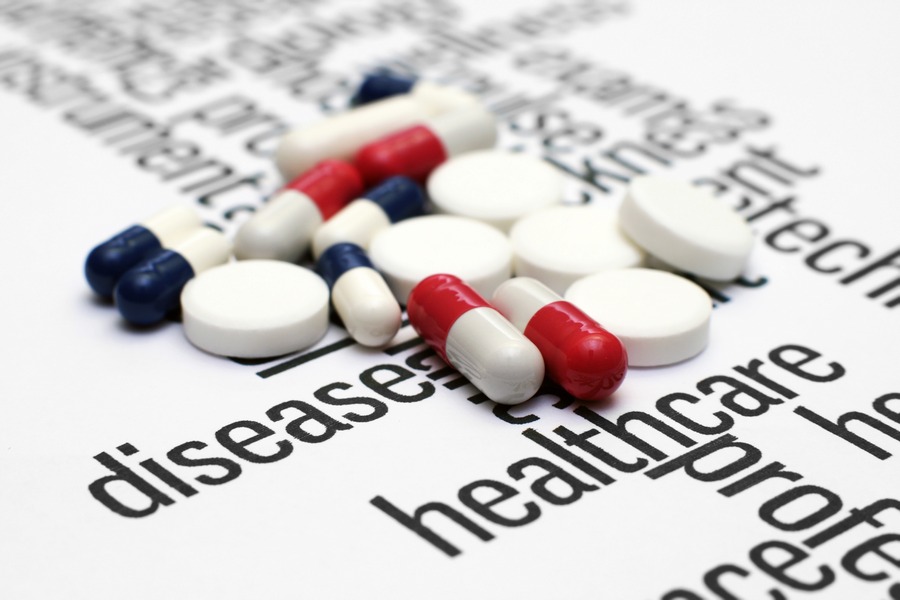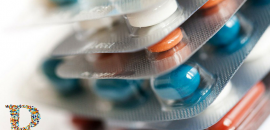Antibiotics: History, Classification, Uses
Antibiotic is a substance having a detrimental effect on bacteria. Their origin can be biological or semisynthetic. These drugs have saved many lives, so their discovery is of great importance for the whole humanity.
The History of Antibiotics
Many infectious diseases, such as pneumonia, tuberculosis, typhoid fever, dysentery, were considered incurable. Also, patients often died after surgeries because wounds festered, gangrene began and further sepsis. As long as there were no antibiotics.

They were discovered in 1929 by Professor Alexander Fleming. He noticed that green mold, particularly substance which it produces, has a bactericidal and bacteriostatic effect. Mold produces a substance called by Fleming penicillin.
Penicillin has a detrimental effect on bacteria and some species of protozoa, but absolutely no effect on white blood cells that fight disease.
It was only in the 40s of the XX century when mass production of penicillin began. Around the same time, sulfonamides were discovered. Scientist Gause discovered gramicidin in 1942, Selman Waxman discovered streptomycin in 1945.
Subsequently, there were discovered such antibiotics as bacitracin, polymyxin, chloramphenicol, tetracycline. By the end of the XX century, all natural antibiotics had synthetic counterparts.
Classification
Now there are so many Canadian antibiotics. First of all, they differ in their mechanism of action:
- bactericidal action – penicillin, streptomycin, gentamicin, cephalexin, polymyxin;
- bacteriostatic action – tetracyclines, macrolides, erythromycin, chloramphenicol, lincomycin;
- pathogens either completely die (bactericidal mechanism) or their growth is inhibited (bacteriostatic mechanism), and the organism struggles with the disease. The drugs with a bactericidal action help faster.
They also differ in their spectrum of action:
- broad-spectrum;
- narrow-spectrum.
Broad-spectrum drugs are very effective at many infectious diseases. They are also appointed in the case when the disease is undetermined. They are deleterious to almost all pathogens. But they also have a negative impact on healthy microflora.
Narrow-spectrum antibiotics affect certain types of bacteria. Let us consider them in more detail:
- antibacterial effect on gram-positive pathogens or cocci (Streptococci, Staphylococci, Enterococci, Listeria);
- effect on gram-negative bacteria (E. coli, Salmonella, Shigella, Legionella, Proteus).
The drugs acting on gram-positive bacteria include penicillin, lincomycin, vancomycin, and others. Drugs that influence gram-negative pathogens include aminoglycosides, cephalosporins, polymyxin.
In addition, there are several more narrow-focused antibiotics:
- tuberculosis drugs;
- antifungal drugs;
- drugs affecting protozoa;
- antineoplastic drugs.
Antibacterial agents differ in generations. Now there are already drugs of the 6th generation. Last-generation antibiotics of a broad-spectrum action are safe for the organism, convenient in use and most effective.
For example, consider penicillin drugs in generations:
- 1 generation – natural penicillins (penicillins and bicillins) – these are the first antibiotics, which have not lost their effectiveness. They are inexpensive and available. They refer to preparations of a narrow-spectrum action (act detrimentally on gram-positive bacteria);
- 2 generation – penicillinase-resistant semisynthetic penicillins (oxacillin, cloxacillin, flucloxacillin) – less effective unlike natural penicillins against all bacteria except for Staphylococci;
- 3 generation – broad-spectrum penicillins (ampicillin, amoxicillin). Starting with the 3rd generation, the drugs negatively affect both gram-positive and gram-negative bacteria;
- 4 generation – carboxypenicillins (carbenicillin, ticarcillin) – in addition to all kinds of bacteria, antibiotics of 4th generation are effective against Pseudomonas aeruginosa. Their spectrum of action is still wider than that of the previous generation;
- 5 generation – ureidopenicillins (azlocillin, mezlocillin) – more effective against gram-negative bacteria and Pseudomonas aeruginosa;
- 6 generation – combined penicillins – include beta-lactamase inhibitors. These inhibitors include sulbactam and clavulanic acid. Enhance antibiotics effect, increasing their efficiency.
Of course, the higher the generation of antibacterial drugs, the broader spectrum of action they have, and respectively the higher their efficiency.
Methods of Application

Antibiotic treatment with these drugs can be performed in several ways:
- orally;
- parenterally;
- intrarectally.
The first method for receiving these pills is orally. For this method pills, capsules, syrups, and suspensions are suitable. This method is the most popular one, but it has some drawbacks. Some kinds of the drugs can be destroyed or poorly absorbed in the stomach (penicillin, aminoglycoside). Also, they have an irritating effect on the gastrointestinal tract.
The second method of antimicrobials use is parenterally or intravenously, intramuscularly, into the spinal cord. The effect is achieved faster than in case of oral administration.
Certain types of antibiotics can be administered intrarectally or directly into the rectum (therapeutic enema).
In the most severe disease cases, the parenteral method is used more often.
Different drug groups have various localization in certain organs and systems of human body. According to this principle, doctors often pick one or the other antibacterial drug. For example, at pneumonia, azithromycin accumulates in lungs, kidneys, and pyelonephritis.
Antibiotics, depending on the type, are cleared changed or unchanged with urine.
Rules of Administration
When taking these drugs, a patient must follow certain rules. Because medications often cause allergic reactions, they should be taken with great caution. If the patient already knows about allergy presence, he must immediately inform his attending doctor.
Besides allergy, there may be other side effects. If they have been observed in the past, it is also necessary to inform attending doctor.
In cases when there is a need to receive another drug together with an antibiotic, the doctor should know about it. There often appear cases when drugs are incompatible with each other or the drug decreases antibiotic effect, resulting in ineffective treatment.
During pregnancy and lactation period, many antibiotics are prohibited. However, there are drugs that can be taken during these periods. But the doctor must be made aware of the fact of pregnancy and feeding child with breast milk.
Before taking such drugs it is necessary to read the instruction. Prescribed dosage should be strictly observed, otherwise at too high drug dosage poisoning can occur, but at low dosage, bacteria may become resistant to an antibiotic.
Treatment course must not be interrupted prematurely. Symptoms of the disease may come back again, but in this case, antibiotics will not help. You will need to replace it with another. Recovery can take a long time. Especially this rule applies to bacteriostatic antibiotics.
It is important to comply with not only dosage but also a time of reception. If instruction indicates that you need to take medicine during the meal, then this is how the drug is better absorbed by the body.
However, doctors often prescribe prebiotics and probiotics with antibiotics. This is done in order to restore normal intestinal microflora, which is harmfully affected by them. Probiotics and prebiotics treat intestinal dysbacteriosis.
It is also important to remember that at the first sign of allergic reaction such as itching, urticaria fever, throat and facial swelling, dyspnea, it is necessary to immediately contact a doctor.
If the drug does not work for 3-4 days, it also serves as an occasion to address doctors. Perhaps the drug is not suitable for this disease treatment.
The List of New-Generation Antibiotics
Antibiotics from Canadian Pharmacy are very numerous. It is easy to get lost in this diversity. New generation drugs include the following:
- Amoxiclav;
- Avelox;
- Cefixime;
- Ciprofloxacin;
- Lincomycin;
- Klacid;
- Cefpirome;
- Moxifloxacin;
- Meropenem, etc.
These antibiotics belong to different families or groups of antibacterial drugs. These groups are:
- macrolides;
- amoxicillins;
- cephalosporins;
- fluoroquinolones;
- carbapenems.
All new-generation antibiotics are broad-spectrum preparations. They have high efficiency and minimal side effects.
Treatment period is an average 5-10 days, but in severe cases, it can be increased to one month.
Side Effects
When receiving antibacterial drugs side effects can occur. If they are pronounced, it is necessary to immediately stop taking the drug and consult a doctor.
The most frequent antibiotics side effects include:
- nausea;
- vomiting;
- stomach aches;
- dizziness;
- headaches;
- urticaria fever or rash;
- itching;
- Quincke’s disease;
- toxic effects on the liver;
- toxic effects on gastrointestinal tract;
- endotoxin shock;
- intestinal dysbacteriosis (diarrhea or constipation);
- reduced immunity and body weakening (brittle nails, hair).
Because antibiotics have many possible side effects, they should be taken with great caution. Self-medication is unacceptable, as it can have serious consequences.
Especially precautions should be taken at the antibiotic treatment of children and elderly people. If you have allergies antibacterial drugs should be taken with antihistamines.
Advice to Patients

Any antibiotic treatment, even of a new generation, is always a serious impact on health. Of course, they treat the main infectious disease, but also general immunity is greatly reduced. They kill not only pathogens but also normal microflora.
It will take some time to restore body defenses. If side effects are pronounced, especially those associated with the digestive tract, sparing diet is recommended.
It is recommended to eat more sour-milk products, which are beneficial to stomach and intestines. Fatty, salty, spicy food should be temporarily limited for the period of approximately two weeks.
Prebiotics and probiotics are essential. Reception onset must be simultaneous with antibacterial drugs. But after the treatment course, probiotics and prebiotics should be taken for about two weeks to settle beneficial bacteria of the intestine.
If antibiotics have a toxic effect on the liver, hepatoprotector reception may be advisable. These drugs will restore damaged liver cells and protect healthy ones.
Since the immune system is reduced, the body is especially prone to colds. So you should take care of yourself and not super cool. Take immunomodulatory agents, but it is better if they are of plant origin.
If the disease is viral, antibiotics are useless, even broad-spectrum and of the latest generation. They can only serve as a preventive measure for bacterial infection. For viruses treatment, antiviral drugs are used.







